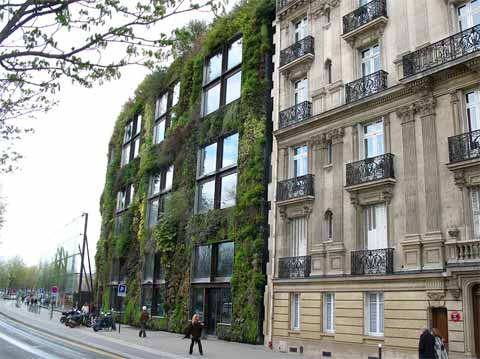
Vertical Gardens are amazing. They bring color, beauty and most of all natural vitality to urban structures. Imagine a living carpet of plants covering almost every wall surface with a minimum of maintenance. This beautiful concept allows man to bring back nature to cities, re-creating a living system very similar to natural environments. In any city, all over the world, a naked wall can be turned into a Vertical Garden, providing a valuable shelter for biodiversity, a cleaning system for cities, as well as adding nature to the daily life of city dwellers.
The concept of the Vertical Garden was conceived by the Parisian botanist Patrick Blanc. It was inspired by the observation that some plants can grow on nearly soil-less vertical surfaces, as long as they have enough water, and the many minerals dissolved in it, together with light and carbon dioxide to conduct photosynthesis. Furthermore, a plant’s root will not damage a wall, but continue to spread on its surface, if it were to be given water on a regular basis.
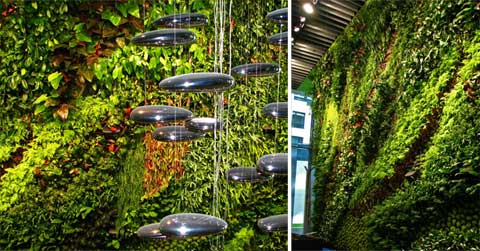
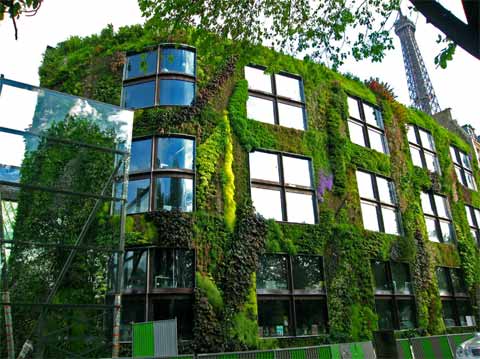
How does it work?
The infrastructure of a vertical garden is composed of a metal frame, a PVC layer and a layer of felt. The metal frame is hung on a wall or can be self-standing, providing an air layer; a 1 cm thick PVC sheet is riveted to the metal frame, providing rigidity to the whole structure and making it waterproof; a felt layer is stapled on the PVC, allowing for an even water distribution without rotting.
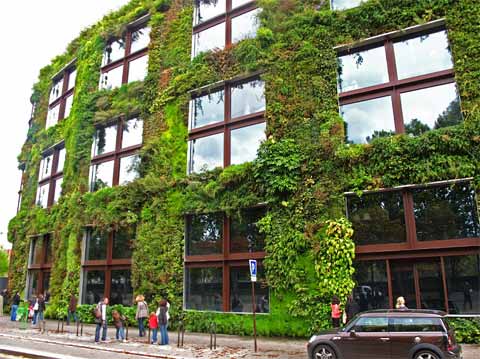
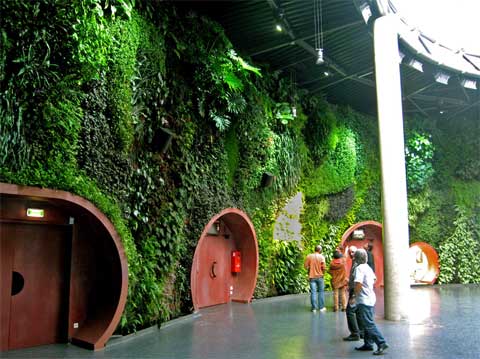
Plant species are selected according to the climatic conditions. They are then installed, approx. 30 plants per square meter, on this felt layer as seeds, cuttings or already grown plants, and this is actually where the roots grow. An automatic system provides water and fertilization from the top. Vertical gardens can also be set up indoor, although artificial lighting is then usually required.
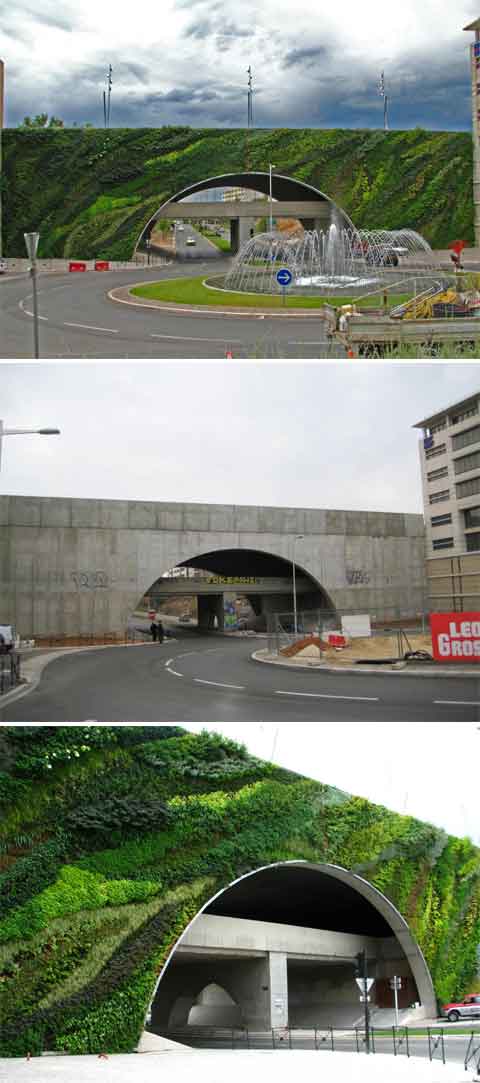














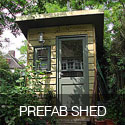

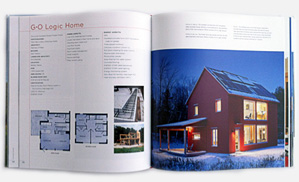
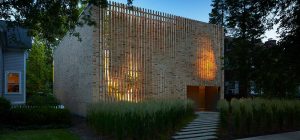







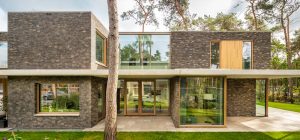

share with friends